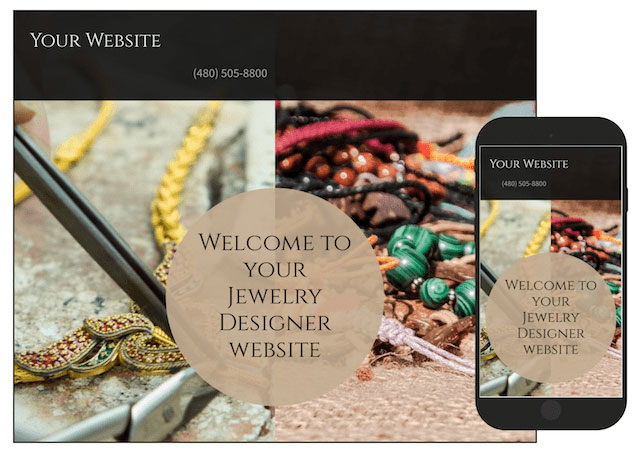Sell jewelry online in 3 steps
If the thought of setting up your own website makes you want to hyperventilate, take a deep breath. If you’re in this for the long haul, you’ll find it’s worth it. It’s not something that needs to happen overnight. Break it down into smaller steps, and before you know it, you’ll be able to sell jewelry online from your very own store.
1. Name your shop
The very first step is to get your domain name. If your jewelry business already has a name, that’s the best place to start. Go to a Domain name registration website, type “yourjewelrybusiness” into the box up top, and see what comes up. If it’s available, huzzah! Now, go purchase it before someone snatches it. Even if you’re still days away from setting up your own website, the low cost of holding onto that domain far outweighs the cost you could incur should someone else get it before you.
Consider adding the word “shop” or “jewelry” after your company’s name if the .com isn’t available. For example, if your jewelry business is called Two Little Peonies but the domain twolittlepeonies.com is already taken, consider twolittlepeonies.shop or twolittlepeonies.jewelry.
With .jewelry or .shop, you can give your online store a unique — and relevant — web address.
Perhaps one of the most important considerations when choosing your domain name is to make sure it’s memorable and easy to spell. While Google is pretty good at figuring out wonky spellings, you don’t want to lose out on potential jewelry sales because your clever name is way too complicated to figure out.
2. Create your eCommerce store
It’s now time to build a website where you can sell jewelry online. Start by choosing a platform and a host. There are plenty of options for building your own eCommerce website, such as Squarespace, Wix, BigCommerce or WordPress using a plugin like WooCommerce. Another option is Shopify, which has hosting and everything you need already built in.

Most of the big platforms often have drag-and-drop templates or themes that make setting up your storefront a breeze. However, if this part freaks you out or you want it fully customized, you can always hire a web designer to do the heavy lifting for you.
Be sure to select a platform with eCommerce functionality.
The two main things you will need are payment gateways and an SSL certificate.
Payment gateway
Popular payment gateways include PayPal, Stripe, Square and Amazon Pay. You can set up one or multiple gateways — you just need a bank account to link it to so the money has a place to go.
SSL certificate
An SSL Certificate turns the http at the beginning of your web address to https. To see this in action, click on your browser bar right now. See the green https:// and the padlock icon? That tells you that this website is protected by an SSL certificate. That’s how you know that any information you send to or receive from this website will be encrypted and hidden from hackers and thieves.
More and more shoppers are looking for the https prefix before submitting credit card info to a website.
3. Fill your jewelry cases

Now that your store is set up, it’s time to fill it with your beautiful, handmade jewelry! Be sure to use well-lit, high-resolution photos to highlight your pieces. Add in compelling sales copy and use language that will resonate with your ideal customer. Try to incorporate relevant keywords when you can to increase your chances of being found in search results.
Once your shop is set up, you’re ready to go! Be sure to test it out to make sure the checkout process works and everything flows smoothly. Before you know it, you could find yourself saying goodbye to the big eCommerce platforms. And hello to your own jewelry store.
Bev Feldman









